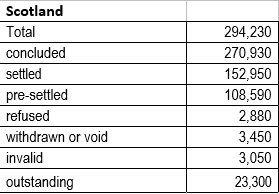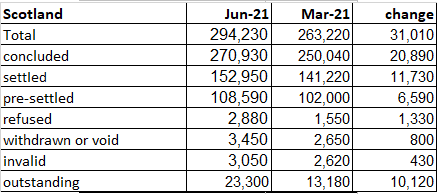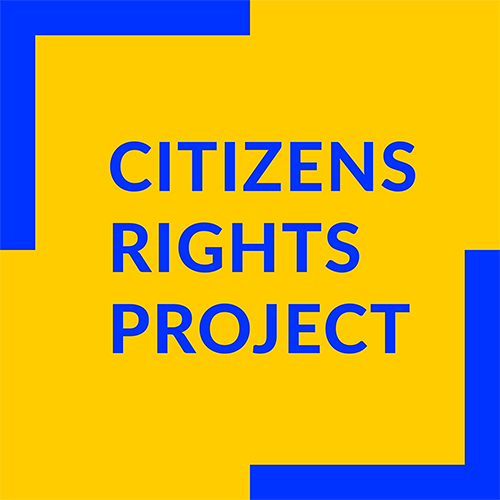The deadline for EU Settlement Scheme applications has passed on 30th June 2021. Since the start of the Scheme in August 2018 (this includes initial pilot period, as the Scheme was widely opened to everyone in March 2019) until the end of the application period, there were over 6 million application submitted in the UK. This was significantly higher number from initially estimated 3 million (hence the name of the organisation the3million).
As we observed a great rush towards the deadline, with many people trying to submit the application before the 30th June, the number of outstanding applications by that date, reached (unsurprisingly) 500 000.
This is of course not the end of the Scheme, as there are provisions for late application for those with reasonable grounds to apply. We have covered that in our previous blog post.
In late September, the Home Office published more detailed, quarterly statistics and so we decided to have a closer look on the figures for Scotland and Scottish local authorities. You can access tables with data on application submitted in Scotland by 30th June 2021 by clicking on the button below:
According to the latest statistics from the Home Office, until 30 June 2021, there have been 294 230 applications to the EU Settlement Scheme submitted in Scotland and 270 930 of them have been concluded.
Out of the concluded applications nearly 57% of them have resulted with settled status and 40% with pre-settled status. Over 3% of concluded applications have other outcome: 2880 applications were refused, 3450 were withdrawn or voided and 3050 were invalid.
23 300 applications (over 8% of all submitted applications) were still outstanding as of 30th June 2021.

In the second sheet of our analysis, we have compared the figures from June 2021 with those from March 2021 and calculated the change in each category of applications. The last 3 months before the deadline were indeed very busy. Over 30 000 applications were submitted but the number of non-concluded applications nearly doubled since March and reached 23 300. This corresponds with what we can observe in the queries received in the last few weeks. Many people who submitted their application few months ago still haven’t received a decision. We have decided to point out just a couple of trends in the period mentioned, but we encourage you to have a closer look at the tables and find more details about the EUSS applications in your local authority.

- In the last three months before the application deadline we could see a significant increase in the number of submitted application in comparison to the previous quarterly statistics from March 2021. Surprisingly however, this period turned out not to be the busiest, as between September and December 2020 there were more submitted applications. We could see a great rush before the end of the transition period and now we can see that at least in Scotland it was much bigger than pre-deadline season. In must be noted, however, that many of the applications submitted in June were more complex, often requiring paper application forms and engaging with advisers on a higher level of qualification. Less applications, unfortunately, didn’t translate to less work, as many immigration advisers admitted that June was the most intense month since introduction of the Scheme.
- Unfortunately, while there were more applications submitted, the number of the resolved applications was similar to the previous three months. This results in more outstanding application, which is a change in a trend that we could see in the first three months of 2021 when the number of outstanding application slightly decreased.
- Very interesting is that in the last three quarterly statistics we can observe the trend among the concluded applications where less pre-settled statuses are granted and more settled statuses. This is in a contrary to our expectations that those who have been living in the UK for a long time applied early and the closer to the deadline, the more applicants will have much shorter history of the residence in the UK.
- A lot of applications were refused in the last three months before the application deadline (1330) comparing to the March (540) and December (550) statistics. There was not that much difference in other categories (withdrawn/void and invalid).
- There were no major changes in the list of ‘top 5’ nationalities who submitted applications in Scottish local authorities, with only several minor changes in the last positions, especially were few nationalities occupied the same place. The picture of the geographical distribution of EU nationals in Scotland that emerged from the December statistics is still relevant now.


